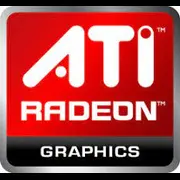ATI FirePro V5800 DVI

ATI FirePro V5800 DVI: An Obsolete Tool for Specific Tasks
April 2025
Introduction
The ATI FirePro V5800 DVI is a professional graphics card released by AMD in 2010. Despite its venerable age, it is still found in older workstations and niche projects. In this article, we will explore what this card is capable of in 2025, who might still benefit from it, and why it is no longer relevant for most tasks.
Architecture and Key Features
TeraScale 2 Architecture
The FirePro V5800 is built on the TeraScale 2 architecture, which once provided high performance in professional applications. The manufacturing process is 40 nm, which by today's standards (5–3 nm for flagship models in 2025) seems archaic.
Unique Features
The card supports DirectX 11, OpenGL 4.1, and OpenCL 1.0. It does not feature modern technologies such as ray tracing (RTX), DLSS, or FidelityFX—these emerged years after the V5800's release. Its only advantage lies in optimization for CAD applications (AutoCAD, SolidWorks) and stable drivers for professional software.
Memory: Modest Specifications
Type and Size
The FirePro V5800 is equipped with 1 GB of GDDR5 memory with a 128-bit bus. Its bandwidth is 51.2 GB/s. In comparison, modern cards with GDDR6X achieve over 1000 GB/s.
Impact on Performance
Even in the 2010s, 1 GB of memory was minimal for complex 3D models. By 2025, this amount is insufficient for rendering scenes in Blender or working with 4K textures. However, it remains adequate for simple tasks, such as 2D graphic editing.
Gaming Performance: A Nostalgia for the Past
Average FPS in Older Titles
The FirePro V5800 was never positioned as a gaming card, but it managed to handle games at low settings in its time:
- CS: GO (720p, low settings): 30–40 FPS;
- Half-Life 2 (1080p): 60+ FPS.
Modern Games
By 2025, even the minimum requirements for AAA titles (such as Cyberpunk 2077: Phantom Liberty) demand 4+ GB of video memory and support for DirectX 12. The FirePro V5800 cannot run such games or will deliver merely 1–5 FPS.
Professional Tasks: Only for Basic Needs
3D Modeling and Rendering
The card is suitable for working in older versions of AutoCAD or SolidWorks with small models. Modern applications like Maya 2025 will lag due to insufficient memory.
Video Editing
Editing 1080p video in Adobe Premiere Pro CS6 is possible, but rendering will take significantly longer than on modern GPUs. The card is unsuitable for H.265 or 4K encoding.
Scientific Calculations
Support for OpenCL 1.0 allows for simple computations, but machine learning or simulations require CUDA (NVIDIA technology) and newer standards.
Power Consumption and Heat Dissipation
TDP and Cooling
The card's TDP is 75 watts. It does not require additional power and can be cooled by passive or compact active coolers.
Case Recommendations
Due to its modest heat output, the card is suitable for small form factor cases, but basic airflow should be ensured. In multi-card setups (such as old render farms), cooling for all slots is necessary.
Comparison with Competitors
Modern Alternatives
In 2025, it is difficult to compare the FirePro V5800 with new GPUs. The closest competitors from the 2010s are:
- NVIDIA Quadro 2000: 1 GB GDDR5, 128-bit bus, similar performance.
- AMD Radeon Pro W6600 (2021): 8 GB GDDR6, support for DirectX 12 Ultimate—this is a completely different class.
Practical Advice
Power Supply
A power supply of 300–400 watts is sufficient. The card connects through a PCIe x16 slot.
Compatibility
- Platforms: Works on motherboards with PCIe 2.0/3.0. Compatibility with PCIe 4.0/5.0 is not guaranteed.
- Drivers: Official support has been discontinued. For Windows 10/11, use drivers from 2015 or emulation via Compatibility Mode.
Pros and Cons
Pros
- Reliability and longevity.
- Low power consumption.
- Support for professional standards (Certified Drivers for CAD).
Cons
- Outdated architecture.
- Insufficient memory for modern tasks.
- Lack of support for new APIs and technologies.
Final Conclusion: Who is the FirePro V5800 DVI Suitable for in 2025?
This graphics card is a relic of a past era. It is worth considering only in two cases:
1. For restoring old workstations, where compatibility with legacy software is critical.
2. For educational purposes, to demonstrate the evolution of GPUs.
For gaming, professional editing, or 3D rendering in 2025, the FirePro V5800 is unfit. If you need a budget GPU for basic tasks, look at modern solutions like the AMD Radeon RX 6400 ($150) or the NVIDIA GeForce GTX 1650 ($160).
Conclusion
The ATI FirePro V5800 DVI is an example of how quickly technology becomes obsolete. Today, it is of interest only to enthusiasts and specialists working with legacy systems. In all other cases, investing in modern hardware will pay off multifold.
Basic
Memory Specifications
Theoretical Performance
Miscellaneous
Benchmarks
Compared to Other GPU
Share in social media
Or Link To Us
<a href="https://cputronic.com/gpu/ati-firepro-v5800-dvi" target="_blank">ATI FirePro V5800 DVI</a>